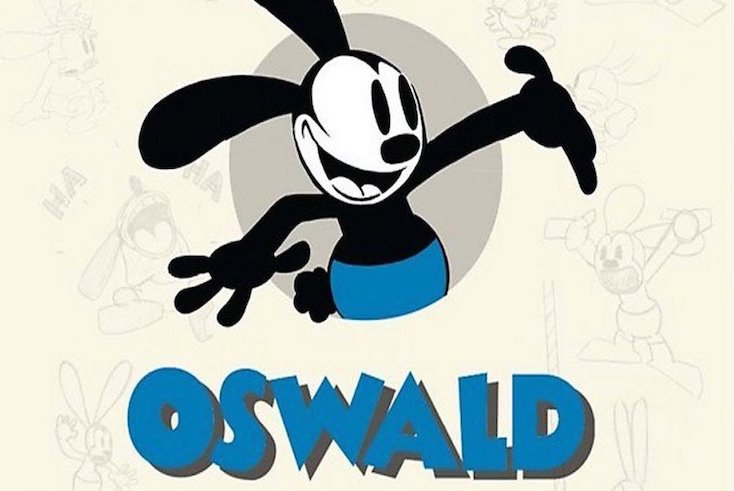Lucky rabbit

Go Luck Yourself, a book written by Lucky Generals founder, Andy Nairn will be published in June. It’s all about the role of luck in building a brand. In this exclusive extract for Mediatel News, he touches on the potential to turn misfortune into good fortune and why you need to create a culture that can go again
Walt Disney was not having a good day. It was 13 March 1928 and he was on a train from New York back to Los Angeles. While in the Big Apple, he’d had a series of disastrous business meetings, where he had lost control over his most precious asset.
His biographer Neal Gabler later explained that, as he sat in the carriage, “the eternally optimistic Walt Disney, who had ridden out crisis after crisis, had one terrifying thought: he would have to start all over again.”
The irony was that the asset in question, the source of all this worry, was a cartoon character called Oswald the Lucky Rabbit.
Disney had created him the year before, with his long-time collaborator Ub Iwerks. The couple were working for Universal after their own studio had gone bankrupt. Their producer, a tough cookie called Charles Mintz, asked them to create a character that would stand-out from the various cats that were all the rage at the time.
Disney and Iwerks not only met the brief, with a rabbit, but exceeded it by investing Oswald with a unique personality.
This was considered revolutionary at the time – previous cartoon characters were two-dimensional servants to the plot whereas Walt wanted Oswald to have a much more rounded identity: “peppy, alert, saucy and venturesome”.
Disney also pushed the boundaries of what an animated movie could do, introducing sophisticated humour, camera angles and editing that had previously been the preserve of live action films.
Oswald the Lucky Rabbit was Disney’s first success.
Audiences loved his debut (Trolley Troubles) and Walt looked forward to making many more.
Universal had commissioned 26 films and were paying him $500 per movie, plus $100 per week – enough to enable him to invest in an oil well. But behind the scenes, Mintz was working on ways to cut Disney and Iwerks out of the picture.
Getting wind of this, Walt travelled to New York to try and negotiate but found himself outwitted by the wily producer. Sitting on the train, he felt despondent. But rather than wallow in his misfortune, he spent the journey trying to dream up a replacement.
By the time he got off in Los Angeles, he had the basis of Mickey Mouse: the most successful cartoon character of all time.
Walt would later reflect that “You may not realise it when it happens, but a kick in the teeth may be the best thing in the world for you.”
It certainly proved so in this case – as the entire Disney empire was built on this apparent piece of bad luck. There’s even a lovely twist in this bunny’s cottontail: 80 years later, The Walt Disney Company bought back the rights to Oswald. Since then, the rabbit has had a new lease of life, with films, merchandise and video games of his own.
In short, this movie had a happy ending. But how many of us would have had the resilience to come back from such a bitter disappointment?
[advert position=”left”]
Marketing is fraught with such setbacks and ideas are constantly at risk from research feedback, budget cuts, company politics and the like.
Very often, we can feel like we have an Oswald on our hands and can’t bear to think of them being taken away from us. But instead of pining for them, we have to pour all our energy into making a Mickey.
In fact, I’d say that the really great marketers these days are brilliant at anticipating this kind of churn and possibly even precipitating it.
When I first started out, cannibalisation was seen as one of the most basic errors in the marketing manual. This seemed self-evident: why would you ever wish to introduce a product that hurt your own sales?
But nowadays, the pace of change is so intense that you need to kill off your best ideas before the market does.
Steve Jobs was a master of this. He believed that “If you don’t cannibalise yourself, someone else will.”
With that in mind, he unleashed wave after wave of products, each of which threatened or even killed its predecessor: iPod, iPhone, iPad and so on.
Of course, this isn’t an easy trick to pull off. Most companies have products that have totemic status within the organisation because they account for such a disproportionate amount of sales.
When you’ve got a winning product like this, it’s obviously tempting to milk it. And if you’ve spent years developing it, it’s painful to contemplate its demise. But you need to be thinking about what comes next, because your competitors will be.
This means creating a culture where ideas are plentiful and there are better ones arriving all the time. A culture where there is no room for complacency and no reluctance to start again. A culture where you know what to do if you find yourself sitting on a depressing train journey from New York to LA.
Like John Steinbeck said: “Ideas are like rabbits: you get a couple and learn how to handle them, and pretty soon you have a dozen.”
Just make sure you can always pull a new one out of the hat, when an old one hops off elsewhere.
Go Luck Yourself is available to pre-order now, from Amazon or Waterstones



